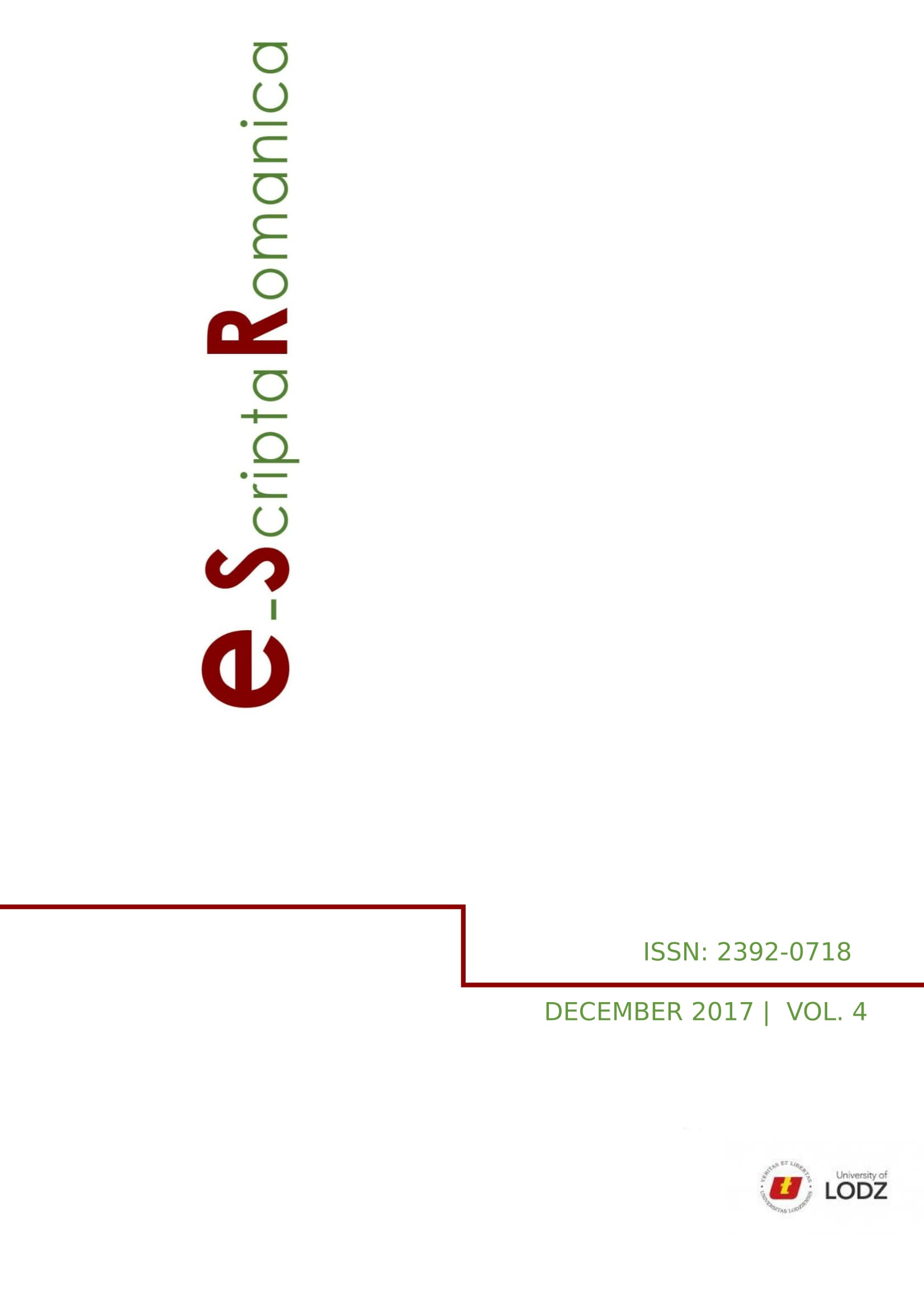An example of the limits of the Latin calque in the description of the name: the case theory in the 18th century
DOI:
https://doi.org/10.18778/2392-0718.04.03Keywords:
noun, article, parts of speech, 17th-century French grammars, 18th-century French grammarsAbstract
When describing the different components of French speech, the grammarians of the sixteenth and seventeenth centuries resorted, like their predecessors, to Latin, viewed then as a model of excellence. More specifically, as far as the noun is concerned, their emulation led them to declare that its occurrence varies in gender, number, and case, just as with its ancient counterpart. Far from constituting an obstacle, the difficulty surrounding the lack of case morphemes in the French substantive is circumvented: in French, the declension of the noun is more properly that of the article, an anteposed occurrence that both clarifies the reference implied by the noun element and varies according to the grammatical function occupied by the noun group. Thus the occurrence la femme (subject or direct object) corresponds to the nominative and the accusative, while the occurrence à la femme (indirect object) would equate to a dative. This theory, already endangered in the sixteenth and seventeenth centuries, was very widely challenged in the eighteenth century. The controversy did nothing to discourage Régnier-Desmarais (1706) and Vallart (1744), who defend the theory of case variation and establish declension paradigms that they clarify and justify at length (first part). Their well-supported arguments clash with reports by Girard (1744) and Du Marsais (1769), who perceive the Latin calque as a syntactic misinterpretation and a misunderstanding of the characteristics of the article, at the time a poorly-regarded class of words (second part). Beauzée (1767) reconciles the two trends, claiming that even if the noun does not undergo declension, French remains a case language as far as the pronoun is concerned. Thereby restoring the legitimacy of the case while limiting it to a precise type of word, he more generally questions the role of this grammatical category (third part).
References
AUROUX S. (1989) : Histoire des idées linguistiques, Coll. Philosophie et Langage, Pierre Mardaga, vol. 1.
Google Scholar
BEAUZÉE N. (1767) : Grammaire générale et raisonnée ou Exposition raisonnée des éléments nécessaires du langage, pour servir de fondement à l’étude de toutes les langues ; Paris, J. Barbou, 2 vol.
Google Scholar
BUFFIER C. (1709) : Grammaire françoise sur un plan nouveau : pour en rendre les principes plus clairs et la pratique plus aisée; Paris, France-expansion, 1972.
Google Scholar
CHESNEAU DU MARSAIS C. (1769) : Logique et principes de grammaire, Paris, Hachette, 1971, 2 vol.
Google Scholar
CHIFLET L. (1659) : Essay d’une parfaite grammaire de la langue françoise : où le lecteur trouvera en bel ordre tout ce qui est de plus nécessaire […], Paris, Champion, 1972.
Google Scholar
D’OLIVET (Thoulier) P.-J. [1767] (1771) : Remarques sur la langue française, Genève, Slatkine reprints, 1968, 2e édition.
Google Scholar
GIRARD G. (1747) : Les vrais principes de la langue françoise ou la parole réduite en méthode, conformément aux loix de l’usage, Genève, Librairie Droz, 1982, 2 vol.
Google Scholar
IRSON C. (1656) : Nouvelle méthode pour apprendre facilement les principes et la pureté de la langue françoise, contenant plusieurs Traitez De la Prononciation, De l’Orthographe […], Genève, Slatkine reprints, 1973.
Google Scholar
LALLOT J. (2012) : Études sur la grammaire alexandrine, Paris, J. Vrin.
Google Scholar
MAUPAS Ch. (1632) : Grammaire et syntaxe française contenant reigles bien exactes et certaines de la prononciation, orthographe, construction & usage de notre langue […], Paris, France-expansion, 1973, réimpression de la 2e édition.
Google Scholar
RÉGNIER-DESMARAIS F. S. [1705] (1706) : Traité de la grammaire françoise, Genève, Slatkine reprints, 1973, réimpression de la 2e édition.
Google Scholar
RESTAUT P. (1730) : Principes généraux et raisonnés de la grammaire françoise : par demandes et réponses […], Paris, France-expansion, 1973.
Google Scholar
VALLANGE (de) [1719] (1721) : Grammaire française raisonée qui ensègne la pureté et la délicatesse de la langue avec orthographe […], Paris, France-expansion, 1973, 2e éd.
Google Scholar
VALLART J. (1744) : Grammaire françoise, Paris, France-expansion, 1972.
Google Scholar
Downloads
Published
How to Cite
Issue
Section
License

This work is licensed under a Creative Commons Attribution-NonCommercial-NoDerivatives 4.0 International License.











